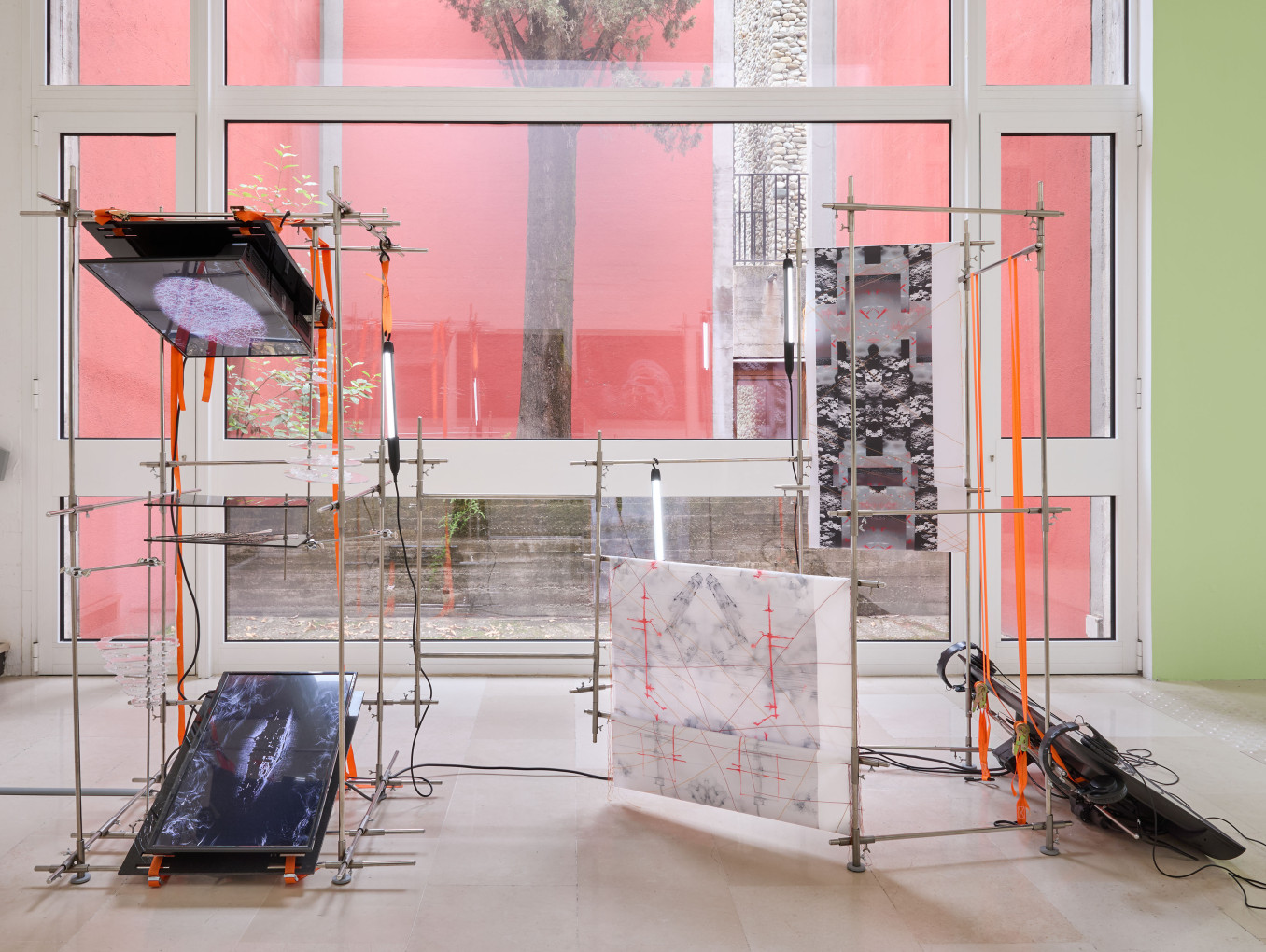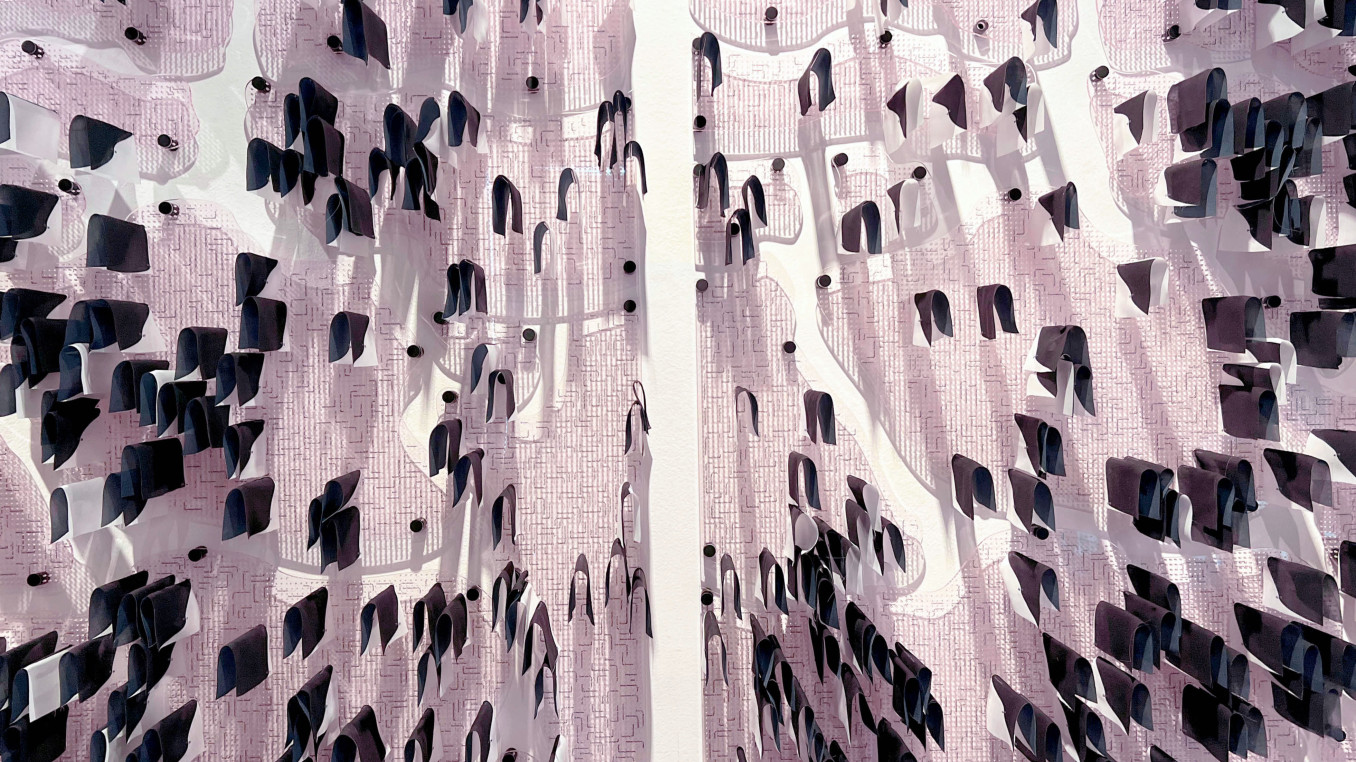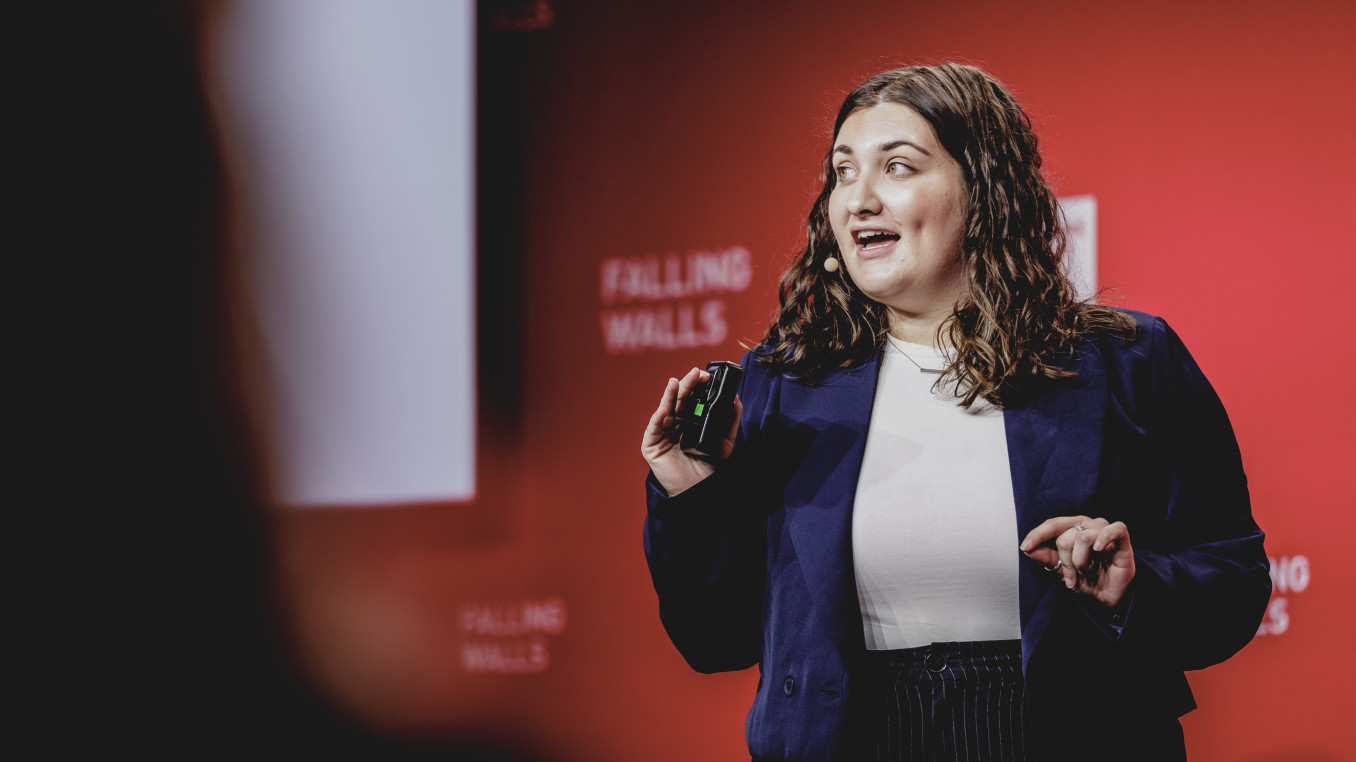Breaking the Wall of Demilitarisation of the Ocean Floor
Breaking the Wall of Demilitarisation of the Ocean Floor
Global Call 2025 Finalist Interview: Art & Science
Robertina Šebjanič is an internationally exhibited and awarded artist/researcher whose practice drifts through the fluid thresholds of ecology, geopolitics, science and arts, attuned to the rhythms and ruptures of aquatic worlds. Focusing on aquatic environments, she navigates interspecies relations and amplifies the submerged voices of oceans and rivers through installations, performances and sound, proposing new ways of sensing, caring and relating beyond the terrestrial.
Her works have received recognition at Prix Ars Electronica, STARTS Prize, Falling Walls and Re: Humanism.
Which wall does your research or project break?
Echoes of the Abyss breaks through the wall of invisibility that surrounds one of the ocean’s most critical yet neglected environmental threats: the presence of discarded (chemical) weapons (Abandoned unexploded ordnance (UXO) ) lying dormant on the seafloor. These toxic remnants of past wars, that are hidden in the ocean's depths continue to disrupt biodiversity, alter water chemistry and endanger ecological stability, functioning as ticking time bombs within marine ecosystems.
Echoes of the Abyss draws from interdisciplinary research that began during an artist residency aboard the TARA research vessel in the Baltic Sea in 2023 and continued through the MADE IN Platform residency in the Adriatic 2024/25. The project bridges art, science, geopolitical tensions and environmental policy to reveal the long-term consequences of munitions dumping—consequences that persist long after the conflicts have ended. It invites us to listen to the oceans, not only through data but also through stories, sounds and the experiences of more-than-human life affected by this submerged toxic and violent legacy.
By integrating artistic methods with scientific inquiry, Echoes of the Abyss addresses the limits of visibility, perception and action in both public awareness and legal frameworks. It raises urgent questions about responsibility and accountability, examining the (in)effectiveness of existing international laws in managing these toxic legacies. In doing so, the project challenges disciplinary boundaries and conventional narratives, proposing new forms of engagement and care with environments that are often out of sight and out of mind.
What is the main goal of your research or project?
The main goal of Echoes of the Abyss is to illuminate the long-neglected issue of discarded chemical weapons on the seafloor; ecological time bombs that continue to impact marine ecosystems, biodiversity and water chemistry. Through artistic research that merges science, policy and more-than-human perspectives, the project addresses the lasting environmental damage caused by military conflicts and underwater dumping practices.
Before the work premiered in exhibition form, artist Robertina Šebjanič organised an international and interdisciplinary symposium in October 2024 at Curkarna in Ljubljana, Slovenia (Symposium: Ocean Around Us – Echoes of the Abyss: Toxic Legacies of Oceanic Ecologies). The aim of the event was to amplify the voices of a diverse range of stakeholders, including scientists, legal experts and divers who are working on removing the dangerous munitions from the sea floor.
Their contributions are not only part of the project’s conceptual framework but also integrated into the soundscape of the video essay, forming a central component of the immersive installation. These layered voices allow the audience to engage directly with the complexity of the issue, bridging factual knowledge and emotional resonance.
By combining fieldwork, sonic storytelling and cross-disciplinary collaboration, Echoes of the Abyss challenges dominant narratives of progress and security, highlighting the often-silenced consequences of geopolitical actions on marine life. The project does not aim to provide clear solutions but rather to open new ways of sensing, relating to and caring for these submerged and entangled environments.
The project proposes to investigate the ethics of empathic care for environments that we cannot easily reach but that are vital to our planetary existence and invites deeper reflection on our responsibilities to visible and invisible ecologies, and the ongoing legacies of human impact in marine environments.
Symposium: Ocean Around Us – Echoes of the Abyss: Toxic Legacies of Oceanic Ecologies
https://robertina.net/international-symposium-ocean-around-us-echoes-of-the-abyss/
https://robertina.net/echoes-of-the-abyss/
https://robertina.net/adriatic-i-echoes-of-the-abyss-adriatic-i-odmevi-brezna/
What advice would you give to young scientists or students interested in pursuing a career in research, or to your younger self starting in science?
Working in an interdisciplinary field where I regularly collaborate with scientists and experts from various disciplines, I’ve come to deeply appreciate how art and science can amplify one another. To those starting out, I would say: remain curious, open and unafraid of crossing boundaries, especially the ones that separate disciplines. I work as an artist / researcher who is often part of scientific explorations and much of my work relates to the implementation of methodologies that merge artist and scientific processes.
Being part of both artistic and scientific communities has shown me how the knowledge of one and the experience of the other can bring forward nuanced, complex and often unexpected questions. These are the kinds of questions that don’t always have immediate answers but are vital for expanding how we think, sense and act in the world.
To my younger self, I would say: trust the value of collaboration and be patient with processes–they will unfold and become clearer over time. The most meaningful insights often emerge at the intersections between disciplines, between people and between ways of knowing. Embrace the unknown and don’t hesitate to explore areas that feel unfamiliar because that’s often where the most innovative and urgent work begins.
What inspired you to be in the profession you are today?
A deep fascination with aquatic environments and their hidden ecologies inspired me to explore the intersections of art, science and environmental research. I like to draw attention to the often-overlooked stories from under the sea and to create spaces for critical reflection and care.
What impact does your research or project have on society?
My project raises awareness of hidden environmental threats, such as underwater chemical weapons and the long-term impact they have on marine ecosystems. By bridging art, science and public discourse, my work encourages more informed, empathetic and responsible relationships between humans and our shared aquatic environments.
What is one surprising fact about your research or project that people might not know?
One surprising fact is that tens of thousands of tonnes of weapons have been dumped into the oceans after geopolitical conflicts and many remain untracked and unregulated to this day. These submerged munitions are still leaking toxic substances, silently affecting marine life and ecosystems.
What’s the most exciting moment you've experienced over the course of your research or project?
During my research for this project there was a moment when I was aboard the TARA research vessel in the Baltic Sea, sailing directly over known (chemical) munitions dumping sites. Being in such a charged location–a place that is layered with scientific, historical and emotional impact–deepened the urgency and direction of the project.


